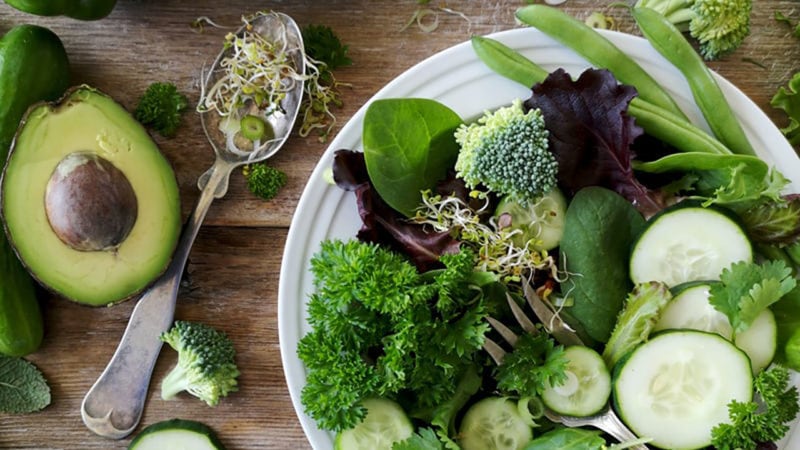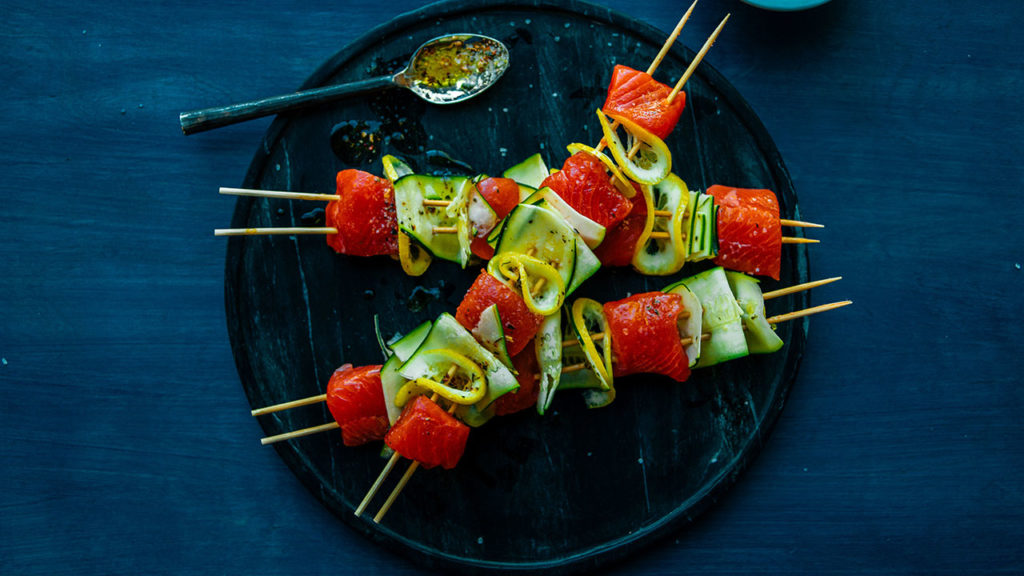Last Updated on March 10, 2021
Anyone who’s ever felt a need to tinker with their dietary intake has likely come across the ketogenic (aka keto) diet. You may know the broad basics: Keto is a popular diet that restricts carbohydrate intake and increases fat consumption as a way to induce ketosis, a metabolic state where your body burns ketones (chemicals made in your liver) instead of glucose (simple sugars) for fuel. As a result, your body stores less fat, leading to weight loss.
Although keto has long been used to help treat diabetes among other health conditions, these days, people also turn to keto to support their weight loss goals. It does require a certain amount of analysis, planning, and – especially if your current diet is carb/sugar-heavy—behavior change. To set yourself up for success, you need a game plan and a well-stocked pantry. Here’s how to build a keto-friendly kitchen, food group by food group.
Fat Matters
Oils: Because fat is central to the keto diet, the types of fats you use for cooking are important. Many keto adherents opt for fats like coconut oil and ghee, which are partially composed of medium-chain triglycerides, which keto proponents claim is easier to digest and convert into ketones. Keto advocates also like to use avocado oil and olive oil for cooking during keto.
- Avocado oil: An unsaturated plant-based fat (so-called “good fat”), we like avocado oil because of its neutral flavor and high smoke point (the temperature at which the oil starts to burn) – which clocks in at about 520°F. That means it works well for high-heat cooking, like frying meats in a skillet or searing before braising.
- Coconut oil: Although it is higher in saturated fat than other plant-based fats, coconut oil is a favorite among keto dieters due to its dense fat content. It’s often used in baking since it behaves similarly to butter.
- Ghee is simply clarified butter; it’s been melted and has the milk solids skimmed off. The absence of milk solids gives ghee a high smoke point (around 480°F), too—making it a nice option when you want a toasty, buttery flavor in whatever you’re cooking.
- Other oils: Additionally, sunflower and sesame oils can be used for the keto diet, and would be good additions to your pantry.
Pass the Cheese, Please
Dairy: While some dairy products are welcome in the keto diet, not all dairy is created equal. Steer clear of milk, which is high in carbs due to its milk sugars (known as lactose). Ditto, any sweetened dairy products, since added sugar means added carbs. That said, some dairy is a great choice:
-
- Most cheeses: Although cheese is made from milk, the sugars in milk are converted to lactic acid during the cheesemaking process, lowering cheese’s carb count. Cheese is high in fat and composed of some medium-chain triglycerides (meaning it’s easier to digest for some people). Finally, when you choose raw milk cheese, you’ll get healthy bacteria as an added benefit.
- Full-fat plain yogurt: As a fermented dairy item, yogurt has many health benefits. If you’re trying to fit it into a keto diet, try a full fat, unsweetened type. People also will mix sour cream and whipped cream for a yogurt-like snack with an even lower carb count.
- Butter: Butter has one of the highest fat levels and lowest carb counts of any dairy product, so go for it. Consider clarifying it (see ghee) in order to cook with it more easily.
Stock up on Vegetables
Vegetables: Veggies are an important part of any diet—especially on keto. They provide a much-needed dose of fiber, vitamins, and healthy bacteria for your gut. But some veggies are higher in carbs than others, and the general rule of thumb is stick to plants that grow above ground while avoiding or minimizing those that grow below ground. Root vegetables and tubers like carrots, beets, and potatoes store starch and sugars in their cells, giving them a higher carb count. Focus on:
- Cauliflower: It’s the keto superfood! Quite low in carbs, versatile enough to replace rice and potatoes, and tastes excellent with lots of added fat.
- Cabbage: Cabbage is another super-versatile piece of produce that’s low in net carbs. The beauty of cabbage—besides its dense amounts of vitamins C and A—is that you can do almost anything with it: shred raw for salads and slaw; steam, saute, roast; or ferment into kimchi or sauerkraut for a bump of healthy bacteria.
- Greens: Whether it’s kale (which comes with a little bit of protein), spinach, chard, or collards, you can’t go wrong with nutrient-dense greens. Great for smoothies, salad, soup—you name it.
Attack of the Low-Carb Snacks
Snacks: This might be the trickiest area because chips are good. The carb-lover in you might have a hard time ditching this entire category, but keto’s gotta keto. So:
- Nuts: Munch on these sources of heart-healthy fat to your heart’s content, especially higher-fat varieties like macadamia nuts and almonds. Or dip veggies like celery into rich nut butters (just make sure they’re unsweetened).
- Fruit: Fruit’s naturally-occurring sugars make it a no-go on keto, with a few exceptions. Berries tend to have lower sugar levels than tree fruits or tropical fruits, so stock up on blueberries, raspberries, strawberries—but keep the portions small. Fruit’s health benefits are many, so it’s not something you want to cut out altogether.
- Eggs: Where would we be without eggs? Make frittatas full of greens to snack on, or sprinkle sesame seeds and salt over hard-cooked eggs.
Lean Meats AND Fatty Meats
Fatty Meats: We saved the best for last. It’s a common misconception that keto is a meat-heavy diet. But it doesn’t have to be—the focus should be on that high level of fat consumption to keep your body in ketosis. That said, higher fat meats are a great way to get protein and fat together in one fell swoop. Here are a few items that fall into that category:
-
- Bacon: You know it. Bacon—especially nitrate-free and unprocessed—is one of the stars of keto because, well, it’s bacon—and it offers a dense supply of fat. Plus, it tastes good on just about everything.
-
- Chicken: Step aside, boneless, skinless chicken breasts. For ketosis purposes, you want to focus on skin-on, dark meat chicken, like legs and chicken thighs.
-
- Beef: Look for fattier cuts, like brisket, T-bone steaks, and, our favorite, ribeye.
Lean Meats: Thomas Delauer, a friend of ButcherBox and the go-to source for all things keto diet, is not opposed to fatty cuts of meat but finds more benefits in leaner cuts. “I am a fan of going with leaner cuts of meat so that you can control your fat intake more,” Delauer said. “One of the main benefits of ButcherBox is the higher quality meat that has a lower fat content because grass-fed beef is markedly leaner!”
Beyond lean cuts of beef, chicken breasts, pork loin, and salmon are also good sources of lean protein.
If ketosis is your preferred state, then these suggestions should set you up right!



